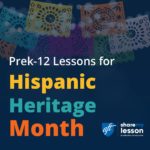Students can hear Sal give an introduction to campaign finance up to and after Citizens United, including the difference between soft and hard money, the influence of PACs and super PACs, and the impact of the McCain-Feingold Act. They can then follow that up with an in-depth video on Citizens United v. FEC in which Sal discusses the background and holdings of the case with scholars Richard Hasen, professor of law at UC Irvine School of Law, and Bradley Smith, former chairman of the FEC. Teachers can then assign an exercise to their students aligned to the current AP Government and Politics exam to assess how well they understood the content of the lesson.
When National Security Trumps Individual Rights
On December 18, 1944, the U.S. Supreme Court handed down one of its most controversial decisions when it upheld the government’s decision to intern all persons of Japanese ancestry (both alien and nonalien) on the grounds of national security. Over two-thirds of the Japanese in America were citizens and the internment took away their constitutional rights. In this lesson, students evaluate the consequences of past events and decisions related to the Supreme Court case Korematsu v. United States (1944). They consider the challenges involved when trying to balance civil liberties and national security during threatening times and reflect on the lessons learned about civil liberties from the justices in the Korematsu case.
Founding Documents: The Constitution Podcast
After just six years under the Articles of Confederation, a committee of anxious delegates agreed to meet in Philadelphia to amend the government. The country was in an economic crisis — citizens couldn’t pay their debts, the government couldn’t really collect taxes, and rebellions were cropping up in states across the nation. The existing government had the potential to drive the country to ruin. So fifty-five men gathered to determine the shape of the new United States.
The document that emerged after that summer of debate was littered with masterful planning, strange ideas and unsavory concessions. The delegates decided they’d be pleased if this new government lasted fifty years. It has been our blueprint for over two centuries now. This is the story of how our Constitution came to be.
This short episode includes a one-page Graphic Organizer for students to take notes on while listening, as well as discussion questions on the back side.
Election: The Road to the White House (Secondary)
During an election, civic energy reaches a fever pitch. The vote is one of the citizen’s most powerful tools, and advocating for a candidate, a set of ideas, or a platform is the right of every citizen. The President of the United States is often called the most powerful person in the world, so with every presidential election, the stakes are high. This unit is designed to teach students about presidential elections. It is not a collection of facts, diagrams, and explanations of processes. It is an interactive, project-based unit that invites the student to fully engage in the process of an election while also informing students about how elections work. It is our hope that this unit helps cultivate the sorts of informed and engaged citizens that are so essential to our democracy.
Hispanic Heritage Month Activities & Resources

Each year, from September 15 to October 15, the United States observes Hispanic Heritage Month. During the month-long celebration, which begins on the anniversary of the independence of many Latin American countries, we commemorate the histories, cultures and contributions of Hispanic American citizens. Share My Lesson has lesson plans, activities, and classroom resources to help educators celebrate Hispanic Heritage Month in their schools.
Teen Curfew
In this lesson, students will consider a proposed teen curfew law in a mock city council session. The class is divided into groups; one group is the city council, and the others represent the interests of groups of citizens – merchants association, county school board, etc. This exercise helps show students how citizens can be involved in policy change and decision making.
Citizens United v. FEC (2010)
Does a law that limits the ability of corporations and labor unions to spend their own money to advocate the election or defeat of a candidate violate the First Amendment’s guarantee of free speech? The Supreme Court has held that donations and campaign spending are forms of speech.
Landmark Supreme Court Cases
In a partnership with the National Constitution Center, Khan Academy talked to constitutional scholars about ten of the most significant Supreme Court cases in history. Teachers can use this lesson as a supplemental resource during their Supreme Court unit to show how constitutional scholars can debate the outcomes of Supreme Court cases, as well as the impact these cases have had on the United States.
How Have Americans Responded to Immigration?
In this activity, students will analyze documents related to immigration in the United States. Then they will determine whether immigration was welcomed or feared by Americans, and to what degree, by placing each document on the scale according to their analysis.
The Sedition Act: Certain Crimes Against the United States

The Sedition Act of 1798 passed during John Adam’s administration by the Federalist Party touched off a lively debate about the right of free speech. It also presented an early test case to the citizens and government of the United States. In times of war or imminent danger, how do you balance the need for security with the rights of individuals? How can partisan politics affect the process of shaping security policies?